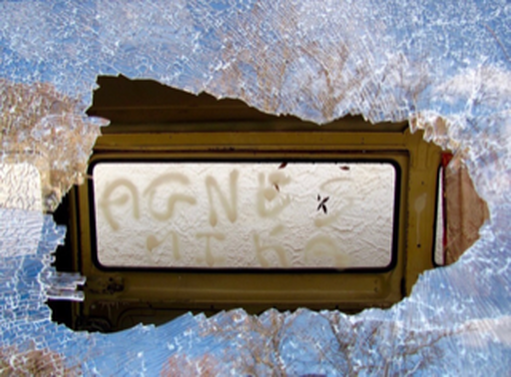|
Ars Ekphrasis Ekphrasis is not a quirky mode of making poems, a party trick like the limerick. Image begets imagination. All poems are ekphrastic. Like tennis with the net, what’s given gives boundaries to work with. That painting of a boy falling from the sky gives W. H. Auden a scaffold for suffering. That sculpture of a girl scrubbing the floor gives Agha Shahid Ali the diameter of dignity. This photograph, say, of an abandoned van gives you what? First, attend to the details: Small red curtain, with floral spirals. The vehicle’s aging interior. Graffiti of a woman’s name. Window smashed clean through. Shards of broken glass reflecting the shattered, patterned view—like tiny buckets of branch and cloud and blue. Now, wonder: What mishap, what longing, set such a scene? Accident? Murder? Sex? Who sprayed the paint? Did a jealous brick break the glass in rage? Or a heel thrash in ecstasy, unobstructing the sky? Who snapped the photograph? Why? At last, give the given back: Tell us the least likely story we’d still believe—ours, told in a new way. Paul T. Corrigan Paul T. Corrigan teaches writing and literature at Southeastern University in Lakeland, Florida. His poems have twice won the Artist Choice Award in the Rattle Ekphrastic Poetry Challenge. He leads an annual ekphrastic poetry event, with students and professors, at a local art museum. His poems have appeared inPoets Reading the News and Saint Katherine Review. His essays and interviews with poets have appeared in various venues. He lives in the Peace River Watershed, where he walks to work. More information atpaultcorrigan.com
0 Comments
Your comment will be posted after it is approved.
Leave a Reply. |
The Ekphrastic Review
COOKIES/PRIVACY
This site uses cookies to deliver your best navigation experience this time and next. Continuing here means you consent to cookies. Thank you. Join us on Facebook:
July 2024
|




